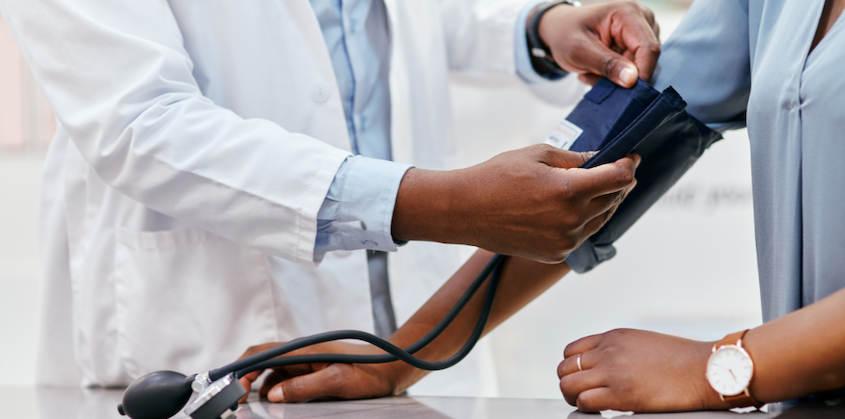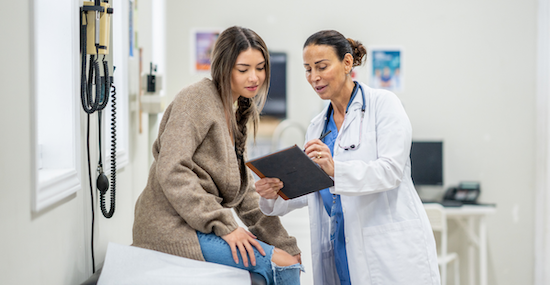Summer Safety Tips for Nearly Every Activity
June 14, 2023
By: Tallahassee Memorial HealthCare
Categories: Healthy Living
From the beach to the bike lane, summer is filled with fun outdoor activities and quality time with family. However, it's important to prioritize safety to ensure a memorable and accident-free experience. At Tallahassee Memorial HealthCare (TMH), we are invested in the safety of your family. That’s why we’ve put together this comprehensive list of tips for various aspects of summer safety, including boat safety, ocean safety, pool safety, bike riding safety, ATV safety and more. By following these guidelines, you can create lasting memories while keeping yourself and your loved ones safe throughout the summer.
Boat Safety
1. Wear life jackets: Ensure everyone on your boat always wears a properly fitted and approved life jacket.
2. Check the weather: Monitor the forecast before embarking on any boating excursion and avoid going out during possible inclement weather conditions.
3. Maintain a proper speed: Follow speed limits and adjust your speed based on water and weather conditions.
4. Assign a designated watcher: Assign a responsible adult to keep a close eye on children to prevent accidents.
5. Educate your family and passengers: Familiarize everyone with basic boating safety rules like always keeping hands and feet inside the boat and avoiding any reckless behavior.
6. Consume alcohol responsibly: It is not safe or legal to operate a boat while drinking. Boating while intoxicated can impair your judgement, reaction time, coordination and ability to safely navigate the waters, which increases the risk of accidents, injuries and even death. For both drivers and passengers, alcohol intensifies the effects of sun, wind and motion on the water, leading to diminished decision-making abilities.
Beach Safety
1. Swim near lifeguard stations: Choose swimming spots with lifeguards close by and ensure your family members swim within a designated area that’s visible to both you and lifeguards.
2. Learn rip current awareness: Educate yourself and your family about rip currents and how to identify and escape them.
3. Be cautious of tides: Be mindful of rising rides, as they can change rapidly and pose a risk to swimmers.
4. Supervise children closely: Keep a close eye on children when they are in or around the water, even if they are proficient swimmers. Always designate a responsible adult to keep a close eye on any children in or around the water.
5. Respect marine life: Teach your family to respect and observe marine life from a distance. Avoid interactions that could be harmful to either humans or animals.
Pool Safety
1. Install barriers: Secure your pool with fences or barriers to prevent unsupervised children from accessing the water.
2. Learn CPR: Enroll in a first aid and CPR course to prepare for any emergency in or around a pool.
3. Assign a water watcher: Designate a responsible adult to supervise children in or around the water. This adult should provide their undivided attention to this task to prevent any accidents or emergencies.
4. Use safety equipment: Always keep life-saving equipment like a shepherd’s hook and a life preserver near the pool. Ensure that little ones wear a properly fitted flotation device if they are unable to swim on their own.
5. Get swimming lessons: Encourage family members to learn how to swim – it’s an essential life skill that increases pool and water safety.
Bicycle Safety
1. Wear helmets: Always wear a properly fitted helmet that meets safety standards while riding bicycles. Helmets are essential not only for children, but also adults.
2. Follow traffic rules: Obey traffic laws, signals and signs. Ride with the flow of traffic and use hand signals when stopping or turning.
3. Use reflective gear: Ensure that you and your family are visible by wearing reflective clothing and adding reflective accessories to bicycles.
4. Check bike conditions: Regularly inspect your bicycle(s) to ensure proper brake function, tire pressure and reflectors.
5. Stay alert: Encourage family members to stay focused and avoid distractions while riding, such as phones or other electronics.
ATV Safety
1. Wear protective gear: Ensure everyone wears helmets, goggles, long sleeves, long pants and sturdy shoes while riding ATVs.
2. Ride in designated areas: Stick to authorized trails and areas specifically designated for ATV riding.
3. Ride responsibly: Follow speed limits, avoid reckless maneuvers and keep a safe distance from other riders.
Fishing Safety
1. Be aware of your surroundings: Familiarize yourself with the area where you’ll be fishing. Take note of any potential hazards like rocks, strong currents or unstable terrain below the water’s surface.
2. Wear appropriate safety gear: Always wear a properly fitting life jacket, especially if you’re fishing from a boat or in deep water. It’s also recommended to wear non-slip shoes or boots to prevent falls on wet surfaces.
3. Check weather conditions: Avoid fishing during severe weather or gusty winds.
4. Use caution while casting: Be mindful of your surroundings and the presence of other anglers. Avoid casting near people and maintain a safe distance to prevent accidents or injuries.
5. Handle fishing equipment safely: Be careful with hooks, lures and lines to avoid accidental injuries. Keep hooks covered and secure when you’re not suing them and dispose of old fishing line properly to prevent wildlife from getting entangled. Keep a first aid kit handy in case of any accidents.
6. Stay hydrated and protected from the sun: Drink a lot of water and apply sunscreen regularly to avoid dehydration and sunburn. Wear a hat and sunglasses to protect your face and eyes from the sun.
7. Be mindful of wildlife: Respect the natural habitat and wildlife around you. Keep a safe distance from any potentially dangerous animals and avoid feeding or disturbing them.
8. Share your plans and communicate: Let someone know about your fishing plans, including your intended location and estimated return time. If possible, fish with a friend or in groups for added safety.
9. Familiarize yourself with local regulations: Understand and adhere to fishing regulations, including licensing requirements, catch limits and specific rules for the area where you'll be fishing. This ensures legal compliance and conservation of fish populations.
10. Learn basic first aid: Equip yourself with basic first aid knowledge and carry a first aid kit to address minor injuries or accidents that may occur while fishing.
Backyard and Outdoor Safety
1. Stay hydrated: Ensure everyone in your family drinks plenty of water throughout the day, especially when spending time outdoors. Keep water bottles readily available and encourage regular water breaks.
2. Use sunscreen: Protect your family from sunburn by routinely applying high-SPF sunscreen to their skin every two hours or more frequently during swimming or any sweaty activities.
3. Provide shade: Set up shade structures like umbrellas, canopies or tents to offer protection from direct sun.
4. Dress appropriately: Choose lightweight, breathable clothing that covers the skin to minimize sun exposure. Wear hats and sunglasses to protect the face from the sun.
5. Time outdoor activities wisely: Plan outdoor activities during the cooler parts of the day like mornings and evenings, when the sun’s intensity is lower. Avoid peak heat hours between 10 am and 4 pm when the sun is the strongest.
6. Check playground equipment: Inspect your back yard or neighborhood playground equipment for damage, loose parts or sharp edges. Ensure that it is secure, stable and free from any potential hazards before allowing children to play on it.
7. Mosquito protection: Minimize the presence of pesky mosquitos in your yard by removing stagnant water sources, using insect repellent and installing screens or windows and doors to keep them out.
8. Beware of heat-related illness: Educate yourself about the signs and symptoms of heat exhaustion and heatstroke. If anyone in your family shows signs of overheating like dizziness, nausea or rapid breathing, move them to a cool area, offer water and visit an urgent care center.
Theme Park Safety
1. Dress appropriately: Wear comfortable clothing and footwear suitable for walking and being active for many hours. Avoid loose clothing that may get caught in rides or obstruct your vision.
2. Follow height and age restrictions: Adhere to posted height and age restrictions for rides and attractions. These restrictions are in place for safety reasons and should be respected to prevent accidents or injuries.
3. Stay hydrated: Drink plenty of water throughout the day. Many theme parks have water fountains or designated refill stations. So, carry refillable water bottles and take regular breaks to hydrate.
4. Establish a meeting point: Select a central meeting point in case anyone in your family gets separated. Teach children how to identify park staff or security so they can easily find help if they get lost.
5. Use the buddy system: Identify a buddy for each family member. Encourage everyone to stay together and keep an eye out for each other, especially in crowded areas.
6. Follow ride instructions: Listen attentively to ride instructions from the park staff and follow them carefully. Observe all safety guidelines including the proper use of restraints and seat belts.
7. Sun protection: Apply high-SPF sunscreen before entering the park and re-apply every two hours throughout the day. Use hats, sunglasses and seek shade often to protect yourself from the sun.
8. Be mindful of food allergies: If any family member has food allergies, inform park staff and check food options for allergen information. Carry all necessary medications, such as epinephrine pens, in case of emergencies.
9. Stay updated on park information: Familiarize yourself with the park layout, emergency exits and any safety information. Stay up to date on any park announcements or changes to park operations.
While safety is often a priority for many in the summer, accidents happen. When they do, it’s important to know where to go. If you or someone you’re with experiences life-threatening emergencies, such as trouble breathing, shortness of breath, chest pain or pressure, or severe wounds or injuries, visit your nearest emergency center. TMH has two emergency centers conveniently located in Tallahassee – our Bixler Trauma and Emergency Center located at our Main Hospital or Emergency Center - Northeast near the intersection of Thomasville Road and Interstate 10.
For minor medical issues, such as sprains, bumps and bruises, minor cuts or illness, a visit to your primary care provider or nearest urgent care center should be sufficient. TMH has two urgent care centers in Tallahassee, and multiple primary care provider locations.
We hope you have a fun and safe summer!




